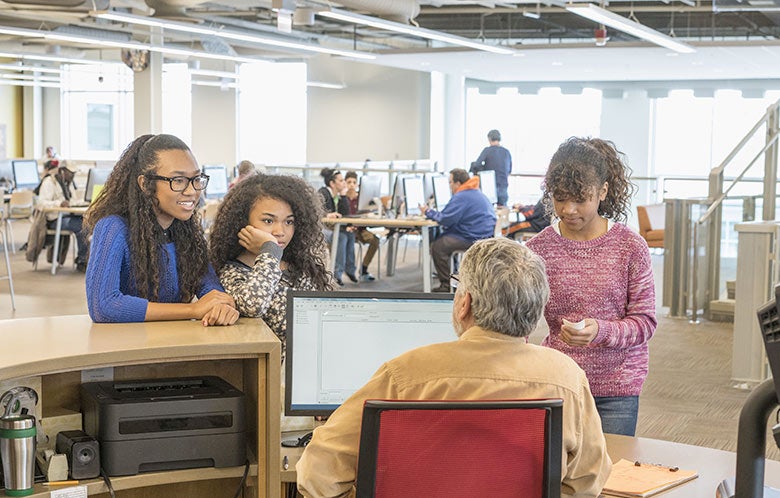Primary sources. Another buzzword in education. Everyone talks about them, but are you using the right ones and in the right way? Primary sources provide a window into the past — unfiltered access to the record of social, scientific and political thought and achievement during a past time period, produced by people who lived during that time. Bringing students into close contact with these rare documents and objects can give them a very real sense of what it was like to be alive during a long-past era.
Dr. Lee W. Eysturlid, Science Instructor at the Illinois Mathematics and Science Academy, provides 10 tips for librarians to consider in helping to bring primary sources into the classroom and also some information about a great resource for primary sources. With more than 50,000 primary sources, ABC-CLIO Solutions databases are chock-full of unique primary sources and additional activities to engage students with the primary sources.
1. Why Should Students Use Primary Sources?
This is a really good place for any educator to start. There is clear pressure to use sources that give voice to persons or people, but is what you want students to understand best served this way? If you have not established the basics, or if the voice speaking is simply too “foreign” to your audience, maybe it’s better to read something by a good historian. However, if you do decide that a primary source fits what you are doing, be picky.
2. Define “Primary Source”
A primary source is usually defined as an original document, a creative work or a relic or an artifact. Documents are not just written letters, but also diaries, speeches, photos and state records. A creative work includes artwork of all types, from paintings to novels. Relics and artifacts are, for the classroom teacher, most likely in the form of pictures of architecture, clothing or archeological items.
3. Understand What is “Valid” versus “Factual”
The useful meaning for most history comes by way of the participants’ opinions. Therefore the student must search out the valid answer and must learn to deal with the facts. While there might be a “best” answer; there is not, definitively, an incontrovertible truth. This “messy” reality is served well by the use of primary sources, as they require interpretation.
4. Locate Reliable Copies of Primary Sources
Finding primary source(s) can be problematic. Although the Web is full of sites that have sources in whole or in part, sites can be political in nature or be edited badly. This is particularly true for works in translation. Often translations on free sites are old, and therefore past copyright, making them free. It can be best to search out one or two academically oriented sites, preferably ones that also have background material.
5. Provide Students with the Necessary Background for Interpretation
Too often primary sources are seen as self-explanatory. This can be true, but even something as apparently self-evident as a political cartoon is fraught with party politics, references specific to its own time, and therefore may or may not be “funny” to the modern reader without proper context. Before approaching the selection of a source it is essential for the teacher to do some background reading.
6. Consider Quantity and Length of Primary Sources
This is the moment when the educator must make an assessment of the class’ inherent abilities and skill levels. While a State of the Union address or a Supreme Court case might work for an advanced class, an ESL class might do well with political cartoons — as long as they have captions — and several pertinent quotes. Again, as stated above, a little bit of time and thought in searching the sources can really pay off. Having the available sources all at hand, and searchable, can really work to shorten that task.
7. Decide Whether Students Should Read Primary Sources before or after Additional Context/Commentary
Here again, the instructor must make a decision as to class ability and the goals. Are the students going to be asked to interpret the material for themselves? If so, try having the students read (or look at) the materials first. See what they get out of it before they hear the “historical reality.”
Are students going to be asked to see how the primary source fits with the historical reality of the time? In that case, it may be better to have them read some background commentary before examining the primary source itself. It may also help to give them a few questions to answer that will make engaging the source(s) necessary.
8. Use Primary Sources as Debate Drivers
Primary sources make excellent material for debate. A simple example is the Federalists and the anti-Federalists. Dividing a class between the two and giving them one or two documents from each perspective opens a world of preparation questions and necessitates getting as close to the real meaning as they can.
9. Use Primary Sources for Writing Papers
A mix of primary and secondary materials establishes issues or problems that are ideal for writing about. Students must seek out evidence to support a specific voice from a primary source(s) and then write effectively as to “why” they thought or did what they did. Here again the primary source(s) allows the students to connect with the material as a historian themselves as they engage in the search for valid evidence.
10. Cultivate Empathy
Finally, through primary sources, students can be taught to be empathetic. Rather than simply reading about a distant character that may or may not have anything to do with that student, the historical meaning can be carried forward. It is important that empathy is applied to everything in order to understand the “why.” This means understanding, or being empathic, of the slaveholder as well as the slave, of the Nazi henchmen as well as the Holocaust victim. Here empathy is understanding, not necessarily agreement, which is a very useful skill to cultivate.
